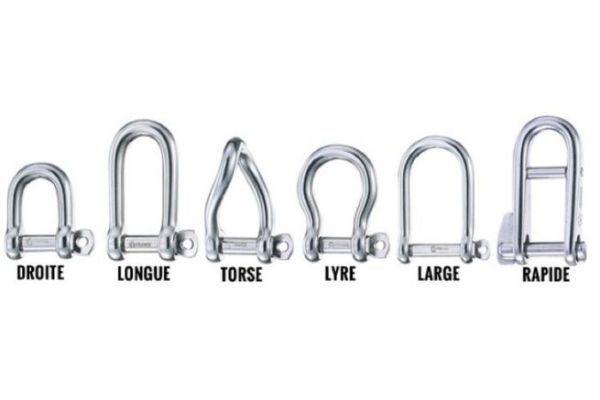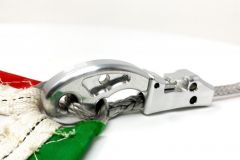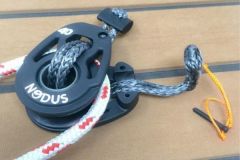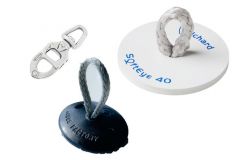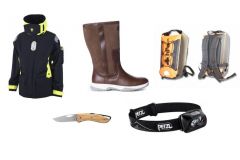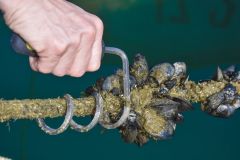To choose a shackle, you have to look at some figures:
- Sleeve diameter
- Length
- Passage
In addition to the ribs, your shackle must also offer good strength. It is necessary to look at the work load (or failure) as well as the corrosion resistance (type of steel or stainless steel used). Fittings catalogues often indicate the work load and breaking load. At the breaking load, the shackle breaks. It is up to you to stay within the workload indications.
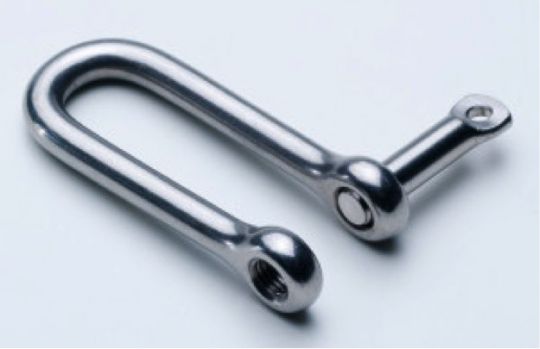
Stainless steel shackle, the importance of steel quality
For a stainless steel shackle, there are 3 grades of steel to choose from. In marine, the standard stainless steel used for the stainless steel shackle is 316L. It offers the right compromise between load resistance and corrosion resistance. HR (High Strength) stainless steel shackles are made of 17.4 PH stainless steel which has a higher mechanical strength. This alloy contains a small amount of carbon (0.07%) which increases strength, but also slightly reduces protection against rust.
The titanium shackle is to be selected when weight gain is essential.
How is a stainless steel shackle made?
There are three ways to make a stainless steel shackle (this also applies to other fittings):
- the moulding process
- forging
- machining
Molding, also called microfusion, consists of heating the metal to make it liquid (fusion) and casting it in a mold in the shape of the part to be made. With this inexpensive technique, the structure of the parts is formed randomly or heterogeneously. Gas bubbles can become embedded in the metal, making it less solid.
Forging makes it possible to design resistant parts by deforming the heated metal. The metal is pressurized between two dies that hollow the shape of the part to be obtained. This technique makes the metal structure homogeneous, giving the part strength and elastic properties.
With machining, a product is shaped by material removal. The structure of the metal is locally weakened.
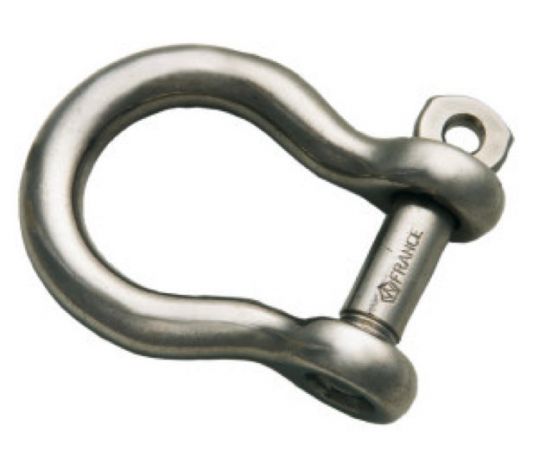
Titanium shackle, for the most demanding sailors
Fans of high-tech products will opt for titanium shackles. The titanium (Ti) construction allows weight savings of up to 45% over a conventional 316L stainless steel shackle.
For example, the 6 mm straight shackle weighs 22 g in 316L stainless steel and 14 g in titanium. In addition, the workload is better for titanium (680 kg compared to 600 kg for stainless steel).
This difference is even more pronounced on a larger diameter. Thus the 8 mm straight shackle works at 1,000 kg in stainless steel and 1,440 kg in titanium (+44%) with a weight that goes from 55 g for stainless steel to 34 g for titanium.
But this choice has a cost. Titanium is worth a fortune, so let's not hide it. But if the weight gain at the masthead makes it possible to lighten the boat by several kilos in the keel: the price is forgotten, and the performance remains..
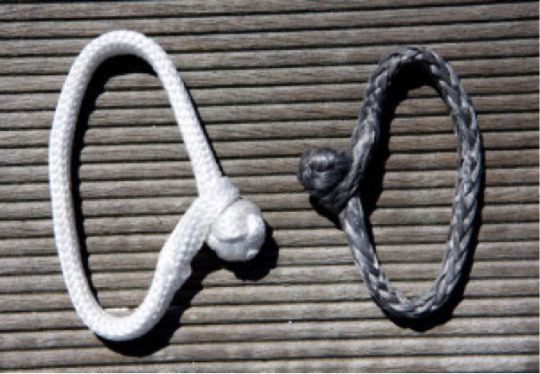
Textile shackle, stronger than steel
The arrival of Dyneema fibre revolutionized seamanship. Insensitive to UV, hydrocarbons, ragage, Dyneema is particularly suitable for all onboard connections. Very resistant and inelastic, this fibre replaces stainless steel without blushing.
The hollow core braiding makes seamanship easy and accessible without any special skills. As proof, the Cousin kit, which consists of 10 m of Dyneema and a hollow needle for making up to 10 textile shackles, with the instructions provided in the package.
With superior strength, enormous weight savings, the textile shackle can replace almost any stainless steel shackle. It is particularly appreciated on sails to avoid seeing metal parts whipped by the wind when the sail is being made.
